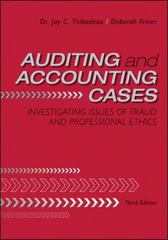Answered step by step
Verified Expert Solution
Question
1 Approved Answer
Basically just need help with some of the consolidation entries and total. Thanks! Constructing the Consolidated Balance Sheet at Acquisition Easton Company acquires 100 percent




Basically just need help with some of the consolidation entries and total. Thanks!
Constructing the Consolidated Balance Sheet at Acquisition Easton Company acquires 100 percent of the outstanding voting shares of Harris Company on January 1,2016. To obtain these shares, Easton pays $105,000 in cash and issues 5,000 of its $10 par value common stock. On this date, Easton's stock has a fair value of $18 per share, and Harris's book value of stockholders' equity is $140,000. Easton is willing to pay $195,000 for a company with a book value for equity of $140,000 because it believes that (1) Harris buildings are undervalued by $20,000, and (2) Harris has an unrecorded patent that Easton values at $15,000. Easton considers the remaining balance sheet items to be fairly valued (no book-to- fair value difference). The remaining $20,000 of the purchase price excess over book value is ascribed to corporate synergies and other general unidentifiable intangible assets (goodwill). The January 1,2016, balance sheets at the acquisition date follow: Cash Easton Company Harris Company $42,000 $20,000 80,000 45,000 110,000 65,000 Receivables Inventory Investment in Harris Land Buildings, 195,000 50,000 30,000 net 200,000 55,000 Equipment, net 60,000 $737,000 25,000 $240,000 Total assets Accounts payable Long-term $80,000 $15,000 190,000 85,000 250,000 20,000 Long-term liabilities Common stock Additional paid-in capital Retained earnings Total liabilities & equity 37,000 180,000 120,000 $737,000 $240,000 a. Show the breakdown of the investment into the book value acquired, the excess of fair value over book value, and the portion of the investment representing goodwill. Do not use negative signs with your answers. Cash paid $ Fair market value of shares issued Purchase price Less: Book value of Harris Excess payment $ Excess payment assigned to specific accounts based on fair market value: Buidlings $ 105,000 90,000 195,000 140,000 55,000 20,000 Patent Goodwill 15,000 20,000 b. Prepare the consolidating adjustments and the consolidated balance sheet. Identify the adjustments by whether they relate to the elimination of stockholders' equity [S] or the excess of purchase price over book value [A]. Remember to use negative signs with your consolidating entries, when appropriate. Easton Company Harris Company Consolidation Entries Consolidated Totals Cash $42,000 $20,000 62,000 Receivables 80,000 45,000 125,000 Inventory 110,000 65,000 175,000 Investment in Harris 195,000 (5) 195,000 X 0 (A) 0x Land 50,000 30,000 80,000 Buildings, net 200,000 55,000 (A) 20,000 275,000 Equipment, net 60,000 25,000 85,000 Patent - (A) 15,000 15,000 Goodwill (A) 20,000 Total assets $737,000 $240,000 837,000 Accounts payable $80,000 $15,000 95,000 Long-term liabilities 190,000 85,000 275,000 Common stock 250,000 20,000 (5) 50,000 x 270,000 x Additional paid-in capital 37,000 37,000 20,000 (5) 300,000 x Retained earnings Total liabilities & equity 180,000 $737,000 120,000 $240,000 300,000 x 977,000 xStep by Step Solution
There are 3 Steps involved in it
Step: 1

Get Instant Access to Expert-Tailored Solutions
See step-by-step solutions with expert insights and AI powered tools for academic success
Step: 2

Step: 3

Ace Your Homework with AI
Get the answers you need in no time with our AI-driven, step-by-step assistance
Get Started


